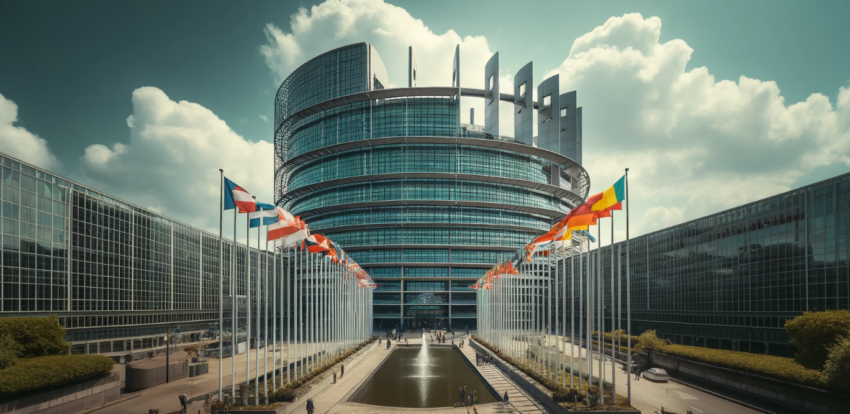| Listen to our audio presentation: Ancient Bond Between Dogs and Humans |
The European Parliament building, often referred to as the Espace Léopold (French) or Leopoldruimte (Dutch), stands as a modern architectural marvel and a symbol of European unity and democracy. Located in Brussels, Belgium, this building serves as one of the three primary working places of the European Parliament, the other two being Strasbourg, France, and Luxembourg City, Luxembourg. This article delves into the history, construction, and significance of the European Parliament building, highlighting its role in European politics and its architectural features.
Historical Context
The European Parliament, as an institution, traces its roots back to the early post-World War II era when European leaders sought to create structures that would ensure peace and cooperation across the continent. The idea of a pan-European parliament was first mooted in 1952 with the establishment of the Common Assembly of the European Coal and Steel Community. This was the precursor to the European Parliament, which was formally established in 1958 as the Parliamentary Assembly of the European Economic Community (EEC).
The need for a dedicated parliamentary building in Brussels became apparent as the European Union expanded and the role of the European Parliament grew in importance. Brussels was chosen due to its strategic location and its status as the de facto capital of the European Union.
Construction and Design
The construction of the European Parliament building in Brussels began in the early 1980s and was completed in phases, with the final phase finishing in 1995. The building complex, known as the Espace Léopold, comprises several interconnected structures, each with unique architectural features:
Paul-Henri Spaak Building: Named after the Belgian statesman and one of the founding fathers of the European Union, this building houses the hemicycle (the main debating chamber), where parliamentary sessions are held. It features a striking postmodern design with a glass facade, symbolizing transparency and openness.
Altiero Spinelli Building: Named after the Italian politician and European federalist, this building serves as the main office space for Members of the European Parliament (MEPs) and their staff. Its design emphasizes functionality and accessibility, with numerous offices, meeting rooms, and public spaces.
Willy Brandt and József Antall Buildings: These buildings, named after the former German Chancellor and the Hungarian Prime Minister respectively, are used for additional office space and meeting facilities. They reflect a blend of modern architectural styles, incorporating elements of steel, glass, and concrete.
The design and construction of the European Parliament complex were guided by principles of sustainability, accessibility, and integration with the surrounding urban environment. The buildings are equipped with advanced technologies for energy efficiency, including solar panels and rainwater harvesting systems.
Architectural Features
The European Parliament building is renowned for its distinctive architectural features, which blend modern aesthetics with symbolic elements reflecting European values. Key features include:
- Glass Facade: The extensive use of glass symbolizes transparency in governance and the openness of the European Union to its citizens.
- Hemicycle: The main debating chamber is designed in a semi-circular shape, promoting inclusivity and equal participation among MEPs. It can accommodate up to 751 MEPs, making it one of the largest parliamentary chambers in the world.
- Public Spaces: The complex includes numerous public spaces, such as exhibition areas, restaurants, and visitor centers, designed to engage citizens and promote understanding of the EU’s work.
- Art and Installations: The buildings house a significant collection of art and installations that celebrate European culture and heritage. Notable pieces include the “United in Diversity” sculpture, symbolizing the EU’s motto.
Significance and Role
The European Parliament building is more than just an architectural landmark; it is the heart of European democracy. As the only directly elected body of the European Union, the European Parliament plays a crucial role in shaping EU policies, passing legislation, and representing the interests of European citizens.
The building serves as a venue for plenary sessions, committee meetings, and various parliamentary activities that influence the lives of millions across Europe. It is also a hub for international diplomacy, hosting visits from heads of state, dignitaries, and representatives from around the world.
Visitor Experience
The European Parliament building is open to visitors, offering guided tours and interactive exhibitions that provide insights into the workings of the EU. The Parlamentarium, the European Parliament’s visitor center, features state-of-the-art multimedia displays and interactive exhibits that make learning about the EU’s history, role, and functioning an engaging experience.
The European Parliament building in Brussels stands as a testament to the vision of a united and democratic Europe. Its modern architecture, coupled with its symbolic and functional design, reflects the core values of the European Union. As the epicenter of European legislative activity, it continues to play a vital role in shaping the future of the continent, embodying the aspirations of peace, prosperity, and cooperation among European nations.

